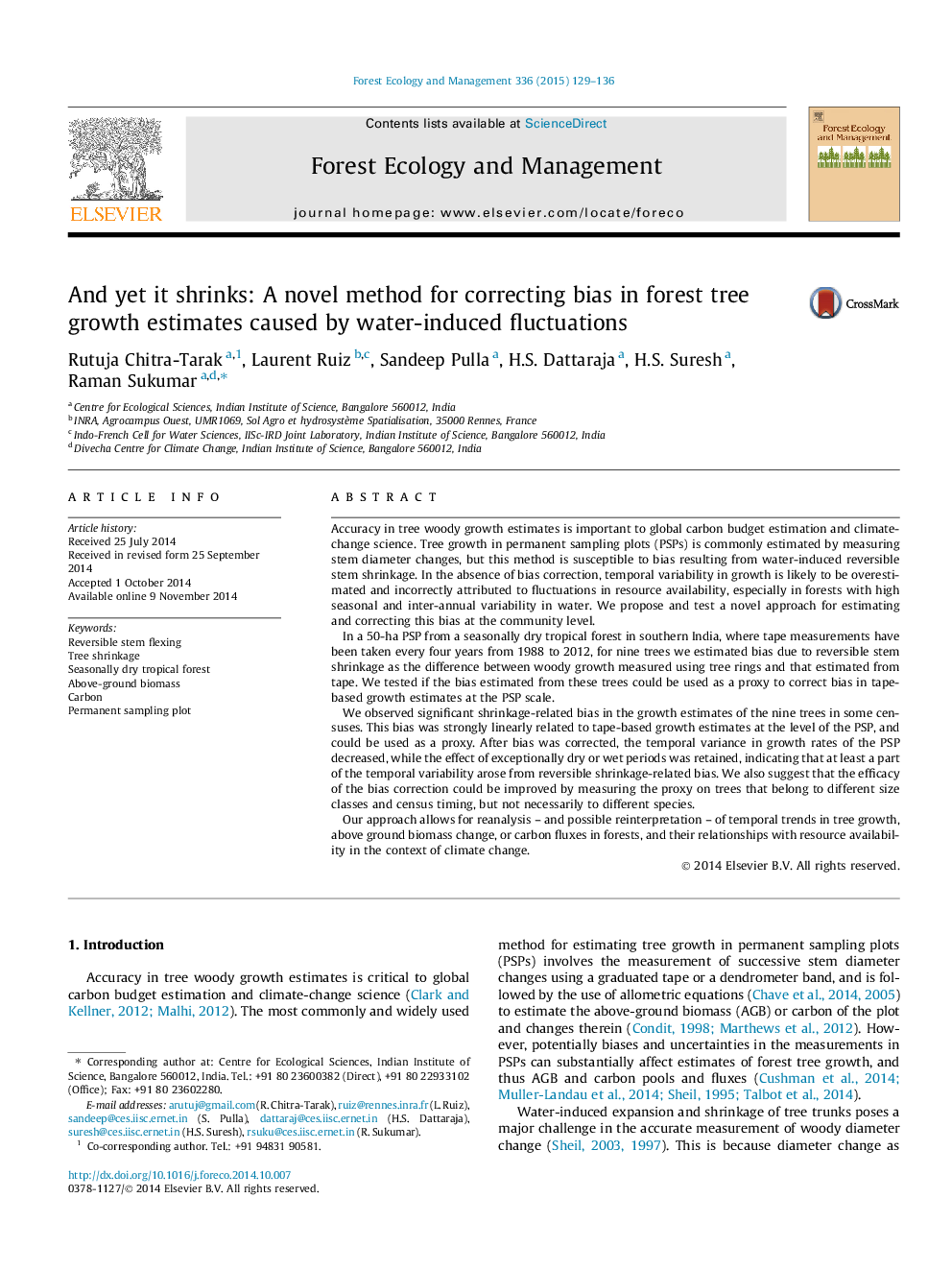| Article ID | Journal | Published Year | Pages | File Type |
|---|---|---|---|---|
| 86424 | Forest Ecology and Management | 2015 | 8 Pages |
•Reversible stem shrinkage was estimated using tape and tree-ring measured growth.•This ‘water growth’ explained the variations in tape measured growth in a few trees.•It was effective as a proxy to estimate census-wise bias at the community level.•Proxy effectivity was sensitive to tree size and census timing, but not species.•This approach has potential for reinterpretation of temporal trends in tree growth.
Accuracy in tree woody growth estimates is important to global carbon budget estimation and climate-change science. Tree growth in permanent sampling plots (PSPs) is commonly estimated by measuring stem diameter changes, but this method is susceptible to bias resulting from water-induced reversible stem shrinkage. In the absence of bias correction, temporal variability in growth is likely to be overestimated and incorrectly attributed to fluctuations in resource availability, especially in forests with high seasonal and inter-annual variability in water. We propose and test a novel approach for estimating and correcting this bias at the community level.In a 50-ha PSP from a seasonally dry tropical forest in southern India, where tape measurements have been taken every four years from 1988 to 2012, for nine trees we estimated bias due to reversible stem shrinkage as the difference between woody growth measured using tree rings and that estimated from tape. We tested if the bias estimated from these trees could be used as a proxy to correct bias in tape-based growth estimates at the PSP scale.We observed significant shrinkage-related bias in the growth estimates of the nine trees in some censuses. This bias was strongly linearly related to tape-based growth estimates at the level of the PSP, and could be used as a proxy. After bias was corrected, the temporal variance in growth rates of the PSP decreased, while the effect of exceptionally dry or wet periods was retained, indicating that at least a part of the temporal variability arose from reversible shrinkage-related bias. We also suggest that the efficacy of the bias correction could be improved by measuring the proxy on trees that belong to different size classes and census timing, but not necessarily to different species.Our approach allows for reanalysis – and possible reinterpretation – of temporal trends in tree growth, above ground biomass change, or carbon fluxes in forests, and their relationships with resource availability in the context of climate change.
